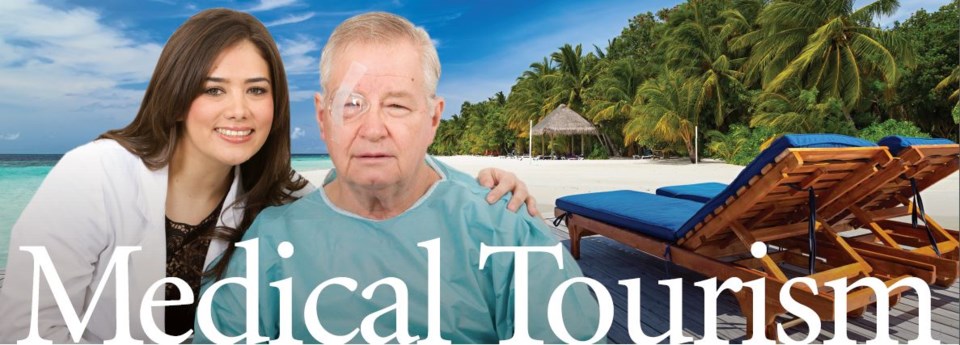It’s a phenomenon that has grown and shifted exponentially since Europeans first began flocking to therapeutic spas or others took to the jungles of South America for a spiritual awakening.
Today, medical tourism is seen as a viable way to avoid long waitlists, limited availability or bureaucratic delays.
Having worked in the healthcare field for more than three decades, Janet Bristeir has seen all of those factors in play and last year she decided to do something about it. The Vancouver resident published three books that serve as comprehensive companion pieces for anyone contemplating travelling internationally for surgery.
“My main consideration is trying to keep people safe when they’re having any kinds of surgery,” she said. “People just have no idea what they’re looking at here because it looks easy at first. You can look at a website and think ‘I can do this, this is great and I can afford it.’ It might not actually be what you think it is.”
Released between January and September 2016, the titles include: Medical Tourism — Your Surgery Journey: A Journal of Your Experience; Medical Tourism Pre-Surgery Checklist and Workbook: What You Don't Know Can Hurt You, andMedical Tourism — Surgery for Sale!: How to Have Surgery Abroad Without It Costing Your Life.
Bristeir’s research suggests more than 800,000 Canadians travel abroad for medical and dental procedures not covered by provincial health plans. She noted typical candidates for medical tourism are 55 and older, have residual income and suffer from a nagging condition that’s having an impact on their quality of life — they may need a hip replacement or knee surgery and want to forego the typical wait times of 18 months to two years.
While the reasons and prices for those procedures differ, there are some commonalities. Some B.C. residents tend to travel to Mexico for surgery. The west coast’s large Chinese and Indian communities travel back to Asia for care. Toronto residents may head to the Caribbean due to the relatively short flight. Those of European descent go home and combine visiting family with undergoing surgery.
“The first question you have to ask is why do you feel the need to go abroad?” Bristeir said. “Pushing forward and getting the surgery may not be a good thing for you and that might be what your healthcare practitioner here may be trying to protect you from.”
The back end of having a foreign procedure done also requires careful consideration: getting to and from the airport, ensuring mobility needs will be looked after and knowing that healthcare practitioners in Canada will be available for any follow-up work.
“You certainly don’t want to come back with any sort of complication and then there’s no one who can look after you apart from walking into an emergency department,” Bristeir said. “Then you impact our healthcare system as well, which is already stretched.”
Bristeir’s areas of speciality are in the fields of operating room nursing and instrument processing — she’s tasked with cleaning and sterilizing the instruments used in surgery. She’s currently employed by a local health authority, but declined to say which one.
Bristeir insists her works aren’t a critique of Canada’s healthcare system, but rather a how-to guide of navigating international surgery. Bristeir is currently working on a series follow-up — ebooks that chronicle the experiences of some Canadians who have travelled abroad for surgery and medical practitioners in Canada who have helped patients when they’ve run into problems internationally.
“The purpose of my book is not to tell people to go abroad and have surgery. If you’re considering this, these are the things you have to consider to keep yourself safe,” Bristeir said.

The Courier has a copy of Medical Tourism Pre-Surgery Checklist and Workbook: What You Don't Know Can Hurt You, and Medical Tourism — Surgery for Sale!: How to Have Surgery Abroad Without It Costing Your Life to give away to the 10th person to email [email protected]. The winner must be able to pick the books up from the Courier’s office.



